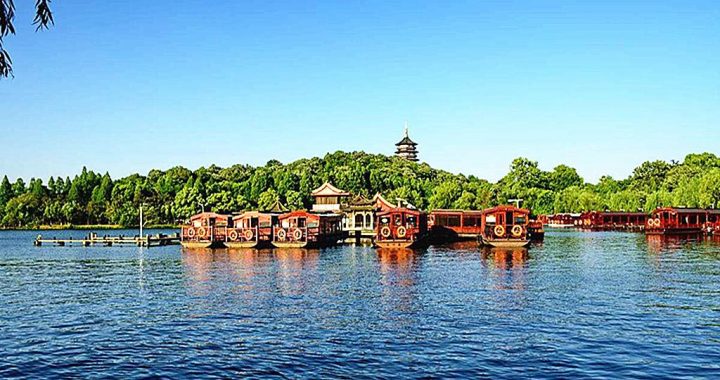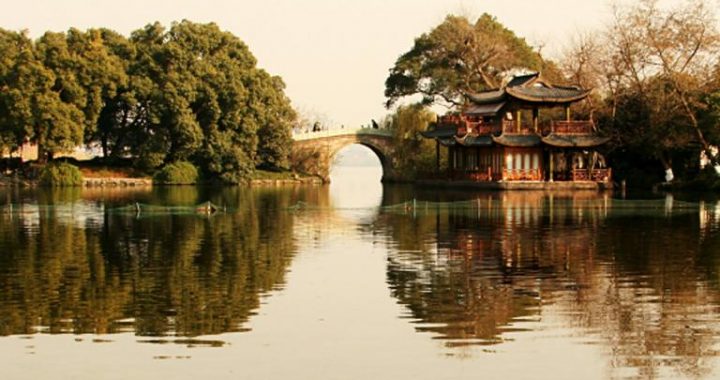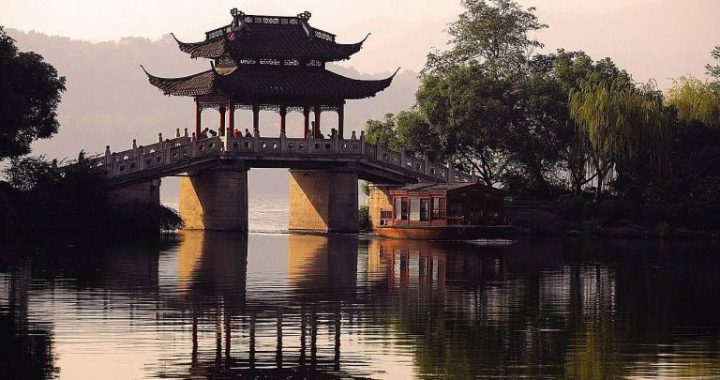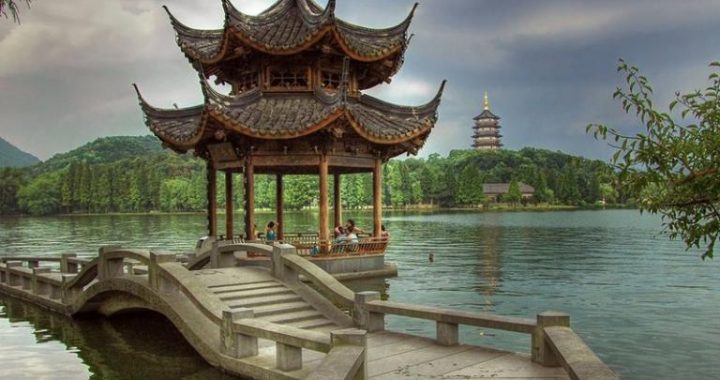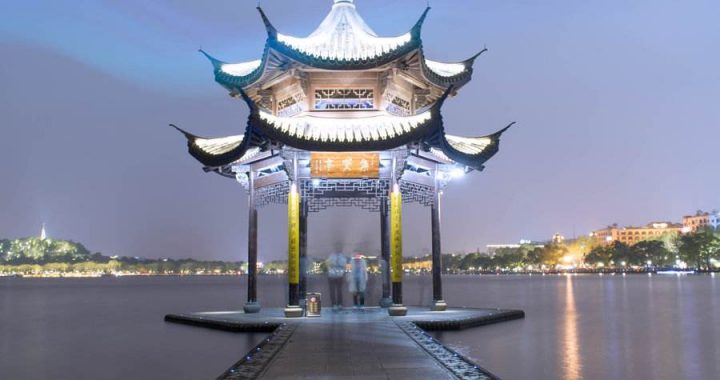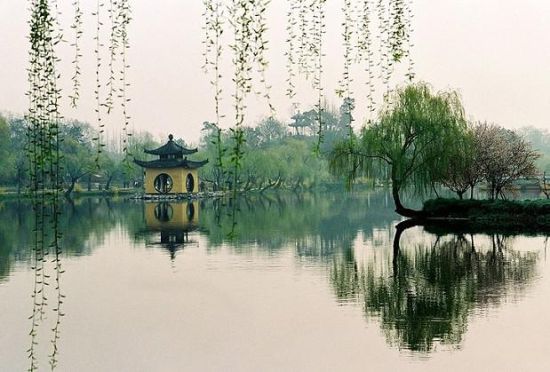West Lake
8 min readHangzhou always comes together with West Lake,the beauty of which is unveiled in numerous poems and prose written by poets and writers,both in the past and at present.
In China,there are 36 west lakes.But the West Lake in Hangzhou,with Su Di and Bai Di crossing over the lake as if two ribbons are flying and four small islands-Gushan(which literally means a lonely hill),Yingzhou(a legendary fairyland),Huxinting(which literally means a pavilion in the center of a lake)and Ruangongdun-dotted in the center,is the most beautiful one.The lake is also known as Wulin Water,Xizi Lake and Qiantang Lake.
Scenery of West Lake
According to Zhu Kezhen,a prestigious Chinese geographer in modern China,the current West Lake first took shape around 12,000 years ago.In the distant past,the lake was no more than a tiny bay facing to its east a patch of shallow beach at the mouth of the Yangtze River.As time went by,mud and sand piled up and finally blocked the mouth of the tiny bay which was called Wulin Bay,thus forming a lagoon.
Then as fresh water kept flowing into the lake,a fresh water lake was formed finally.
After West Lake took shape,the land to the east of the lake gradually turned into a patch of marshland where some primitive people lived and created a splendid Neolithic civilization known as”Liangzhu Culture”.
West Lake became a source of fresh water for people living nearby.In the Sui and Tang dynasties,as inhabitants grew day by day,people gradually moved away fromthe lake for a larger area to live in.Since the source of water was not guaranteed in the new living area,six wells were dug.It was during this period that the layout of today’s Hangzhou took its preliminary shape.
The expansion of the city created a growing demand on the supply of fresh water,but the water provided by the six wells was declining due to more and more silt in West Lake.So the famous ancient Chinese poet Bai Juyi,who was the governor of Hangzhou then,ordered to build a causeway stronger and taller than the original to elevate the water level of the lake.This turned the natural lake into an artificial one.After the project,the nearly dried-up wells were filled with fresh water again,which brought much benefit to people’s livelihood and accelerated the city’s development.Thus the causeway was named Bai Di in honor of Bai Juyi.
Scenery of West Lake(Bai Di)
West Lake gradually became an indispensable part of Hangzhou city.Due to the wide spread of Buddhism,several Buddhist temples and pagodas were built around the lake.Among those which still stand today are Zhaoqing Temple,Ci’en Temple,Leifeng Pagoda,Liuhe Pagoda,White Pagoda and Baochu Pagoda,each of an exquisite artistic style.Leifeng Pagoda always remind people of a touching love story.Long long ago,a white snake was saved by a man when a woodman was about to capture it.In order to repay the favor,the snake turned into a beautiful lady and married the man who saved her life.But the marriage was deemed as immoral,and the legend ends with the beautiful and kindhearted snake-turned lady enjailed under Leifeng Pagoda by a monk named Fahai.Unfortunately,lack of repair for decades finally reduced the pagoda tothe ground in 1924.Reconstructed according to the style and the size of the one in Southern Song,the current pagoda is an octagonal five-storied one with elegant decorations and exquisite displays.Standing in the new pagoda,one can have a bird’s eye view of the beautiful West Lake and the thriving scenes of Hangzhou city.
Leifeng Pagoda
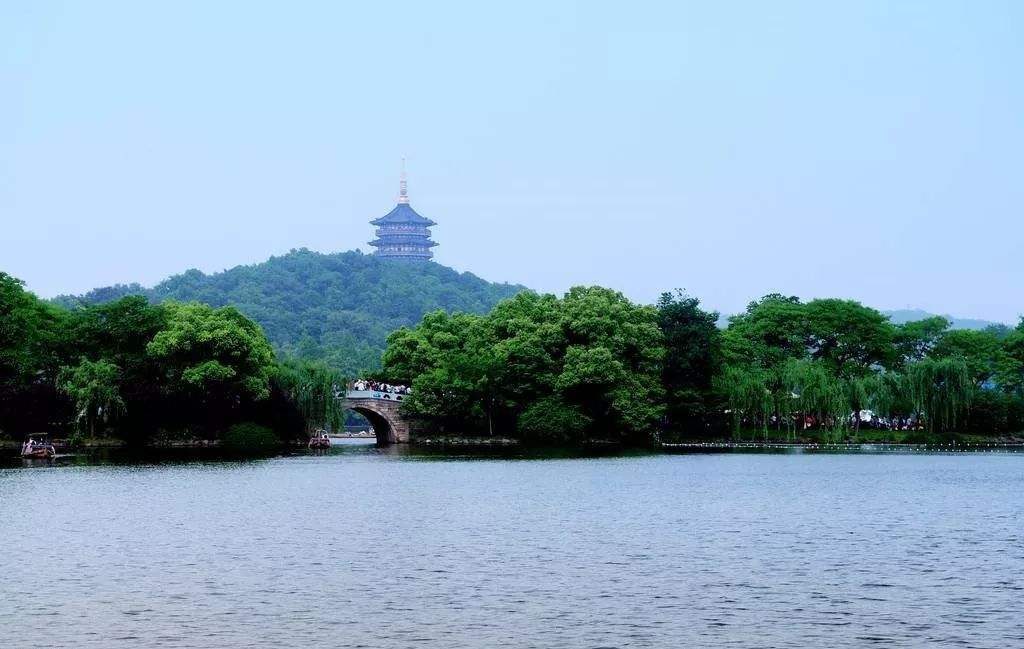
In the Northern Song dynasty,when Su Shi(a famous statesman and ci wrtier in ancient China)came to Hangzhou to serve as the governor,West Lake had silted up bhalf.He immediately worked out a plan to dredge the lake.He ordered to remove thefarming land enclosed in the lake and to build a north-to-south causeway with the mud dug up from the lake.Then six stone bridges were built on the causeway so that water could flow freely.Different kinds of flowers and trees were grown along the causeway.West Lake was more a resort than a reservoir.Foreign envoys,merchants,monks and other visitors came to West Lake,appreciating the picturesque scenery and worshipping the Buddha.In Southern Song,a great many pavilions,terraces,towers and temples were built along the bank of the lake,adding some artificial charm tothe lake.Up until then,the construction of the West Lake scenic area was finished and the layout has remained to day.Later,people named the causeway Su Di in memory of Su Shi.
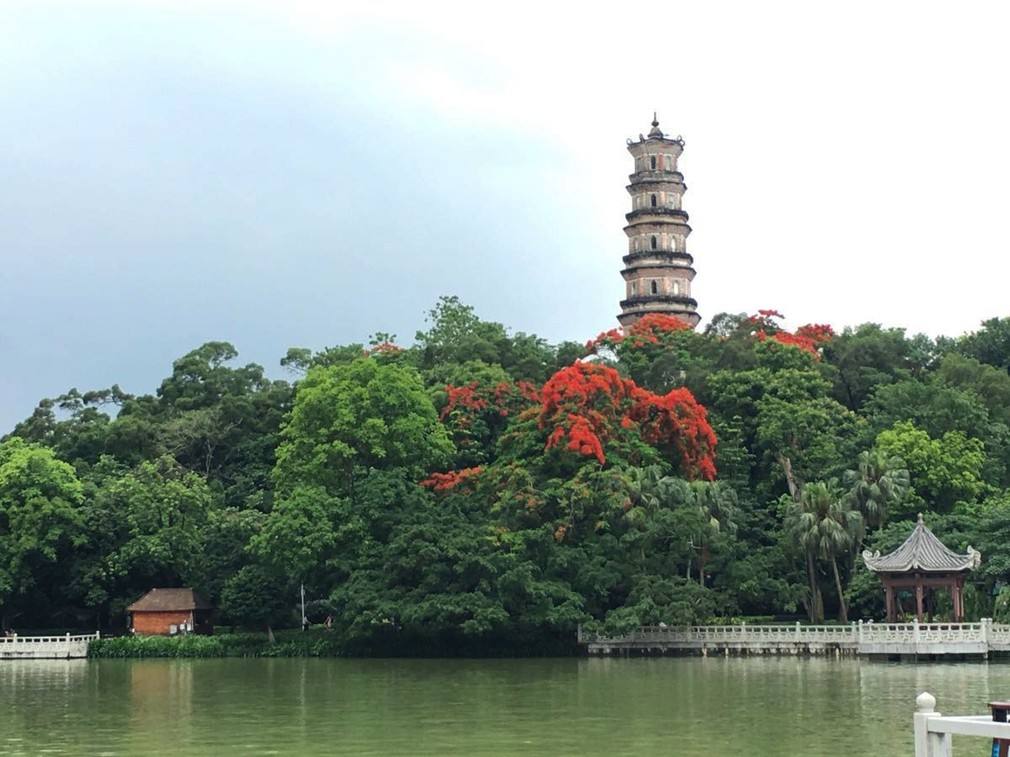
Along the bank of the lake,there are more than ninety parks and scenic spots.
Among them the most famous are the”Ten Scenes of West Lake”which took shape in the Southern Song dynasty.They are”Dawn on Su Di in Spring”,”Curved Yard and Lotus Pool in Summer”,”Moonlight over West Lake in Autumn”,”Lingering Snow on the Broke Bridge in Winter”,”Orioles Singing in the Willows”,”Fish Viewing at the Flower Pond””Leifeng Pagoda in the Sunset”,”Two Peaks Piercing the Clouds”,”Evening Be11 Ringing at the Nanping Hill”,and”Three Pools Mirroring the Moon”.
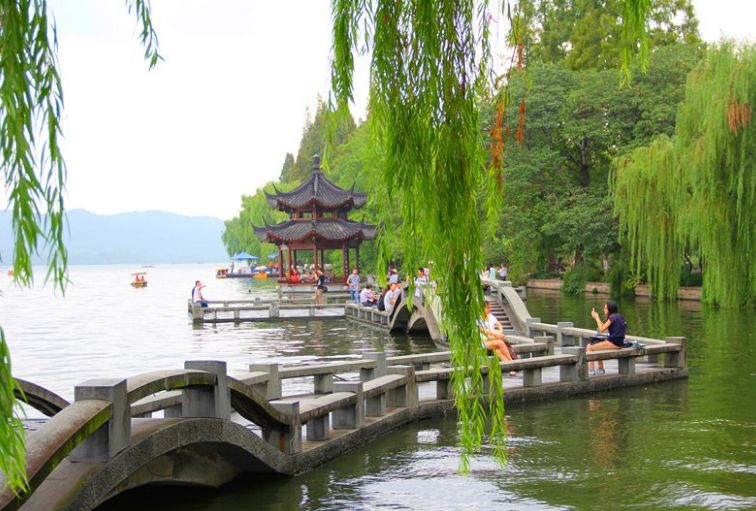
Dawn on Su Di in Spring
Su Di stretches from the Nanping Hill to the Qixia Hill and is nearly 3,000meters long.Six bridges dot along the causeway:Yingbo Bridge,Suolan Bridge,
Wangshan Bridge,Yadi Bridge,Dongpu Bridge and Kuahong Bridge.Each gives people a different yet impressive view.
Curved Yard and Lotus Pool in Summer
Curved yard used to be a wine-making workshop near which there grew many lotuses,floating on the lake.Every summer,the fragrant smell of the lotuses mixed with the aroma of the wine,offering people a feast of smell.Today,more than a hundred kinds of lotuses blossom in summer,offering people a feast for eyes.
Curved Yard and Lotus Pool in summer
Moonlight over West Lake in Autumn
To the west end of Bai Di,there is a royal study.A terrace connected to the study projects over the lake,making the terrace an ideal place for appreciating the bright moon.At night,the moon sheds its light over the tranquil lake,constituting a picturesque scene.
Lingering Snow on the Broken Bridge in Winter
The Broken Bridge is perhaps the most famed among all the bridges in this area.
Snow is quite rare in Hangzhou since it is in the south.Thus every time thesnowflakes fall down,West Lake viewed from the Broken Bridge will take on a different scene.To the east of the bridge there stands a kiosk which holds a steleinscribed with”Duan Qiao Can Xue”(which means Lingering Snow on the Broken Bridge in Winter)by Emperor Qianlong and a pavilion with a tablet inscribed with”Yun Shui Guang Zhong”(which means standing by the river and under the light)by Emperor Kangxi.The grey-brick pavilion topped with a roof with up-pointing corners,together with the Broken Bridge,is very much like a picture with a strong classical taste.

Orioles Singing in the Willows
Area around the southeast bank of West Lake used to be the royal garden of the Southern Song court.There grow many willows.When spring comes,the soft branches of the willows will dance as the wind blows as if waves are moving back and forth in the air.From the dancing willows comes the singing of orioles from time to time,melodious enough to attract any visitor to stop their steps to listen.
Fish Viewing at the Flower Pond
This scene is located on the south part of Su Di.According to a legend,an official of the Southern Song court built a private garden at the foot of the Huajia Hil1(”Hua”in Chinese means flower and”jia”means family).Then he channeled water into a pond in his private garden and raised five-color fish in the pond.Later,the private garden was open to visitors and the garden got its new name”Lu Garden”.
Since it is at the foot of the Huajia Hill,it is now known as”flower pond’.
Fish Viewing at the Flower Pond
Leifeng Pagoda in the Sunset
In this scene, visitors will see not only the new Leifeng Pagoda but also Miaoyin Terrace, Xizhao Pavilion and Qinyuan Pavillion. Miaoyin Terrace (“Miaoyin”
in Chinese means melodious music) is the best place for listening to the ringing of the bell in Jingci Temple. Xizhao Pavillion is where Emperor Kangxi wrote for the tablet of the pavilion. Located to the northeast of Leifeng Pagoda, Qinyuan Pavilion is a place for rest and tea.
Leifeng Pagoda in the sunset
Two Peaks Piercing the Clouds
Two peaks in this scene are two hills: the North High Hill which is 314 metersabove the sea level and the South High Hill which is 257 meters high. Standing behind Lingyin Temple, the North High Hill is a natural screen of the temple. Youneed to climb hundreds of stone steps along the twisted road before you finally reach the top. However, the beautiful scenes and the merrily flowing streams are sure to delight your eyes and your mind. The South High Hill sits to the west of West Lake. Standing on the top of the hill and looking to the east,a visitor will see all the charming scenes of West Lake.
Evening Bell Ringing at the Nanping Hill
The tree-covered Nanping Hill stretched more than a thousand meters along the south bank of West Lake,. The hill is formed by lime-rock and has numerous holes in its body. Every night, when the bells in the nearby temples begin to ring, the ringing will travel far until it reaches the hill where it will be echoed back and forth by the holes in the hill, as if a piece of music is composed and played.
Three Pools Mirroring the Moon
Yingzhou is the biggest island in West Lake. Inside the island, there are small lakes and small islands connected by bridges. Near Yingzhou, there are three two-meter high stone towers, each with five small round holes. On a moon-lit night, thelight from the lamp held in the holes and the shadow of the moon add radiance to each other, creating an extraordinary scene.
